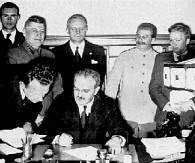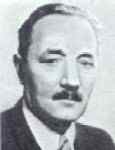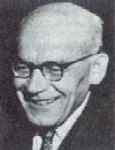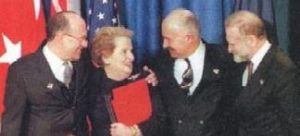Part 5
WORLD WAR I
In the late 19th and early 20th centuries, industrialization and the rise of workers’ movements swept across Europe. By 1914, half the industrial output of Russia came from the area of the former Congress Kingdom.
The 1905 revolution in Russia shook tsarist autocracy to the core. The fighting was particularly bloody in Polish territories and the result was limited liberalization of the region. But Europe was on the brink of war and as conflict loomed, Poles split into two main political camps. The group led by Roman Dmowski advocated support for Russia because, as he put it, a Russian victory would mean incorporation of all Poles into the Russian state. Dmowski believed that Russia would inevitably liberalize and that would mean an increase in Polish influence. The opposing group, led by Jozef Pilsudski, wanted to rely on liberties granted by Austria as a stepping stone to gaining independence for the whole nation. Pilsudski organized the „Polish Riflemen’s League,” eventually the core of his renowned First Brigade, which fought for the Austro-Hungarian Empire in World War I.
Although the two men were diametrically opposed in their political thinking, their ideals led them along the same path to Polish independence. In a remarkable feat of national solidarity, Poles and Polish nationals living in North America and western Europe raised an army of almost 100,000 men – the so called „Blue Army” led by general Jozef Haller .
Restoration of an independent Poland was relatively low on the Allies’ agenda and surfaced only after the United States of America entered the war and Russia collapsed into chaos. Fortunately, US President Woodrow Wilson, a personal friend of famous Polish composer and pianist Ignacy Paderewski, strongly advocated, in his famous „14 Points,” the necessity of restoring an independent Poland with „access to the sea.” With Russia tending to its own problems, the dissolution of the Austro-Hungarian Empire and the Western Allies’ defeat of Germany, the stage was finally set for Polish independence.
INDEPENDENT POLAND – 1918 – 1939
Poland regained its independence on November 11, 1918, the day World War I ended. Much of the credit goes to Jozef Pilsudski who persuaded the Germans to disarm and leave Poland without further bloodshed. Pilsudski’s „war for the frontiers” against the Ukrainian militia in the south-east also ended peacefully. His attempt to pull Eastern Ukraine from the new Bolshevik state, however, was a serious miscalculation that almost cost Poland its newly acquired independence. The Bolshevik armies advanced within striking distance of Warsaw and it was only through skillful military intervention that Pilsudski managed to drive them back in August of 1920. This campaign, known as the „Miracle on the Vistula,” saved the fledgling Polish state and brought to the foreground the future Commander in Chief of the Polish Army, gen. Wladyslaw Sikorski. The frontiers of the Second Republic (sometimes called the Versailles Poland), were formed along historical and cultural lines. There were, however, two major exceptions: Upper Silesia, whose population was still predominantly Polish was left outside the country’s borders while Gdansk was transformed into the so called Free City of Danzig (Gdansk), within which Poland exercised only restricted authority.
The reborn Poland faced enormous difficulties. Four years of war had created massive devastation and more than a hundred years under Partitions had woven striking regional differences into the fabric of Polish society. The new country also lacked basic mechanisms – a unified currency, an army and organized administrative services – necessary to run an independent government. Undaunted, the Poles tackled the challenges of reunification and Poland thrived in spite of the worldwide depression of the 1930’s. By 1939, Poland enjoyed a steady population growth, expanding industrial sector and blossoming academic and cultural life. Unfortunately, the Polish military doctrine, following the guidelines established by Marshall Pilsudski, did not keep up with the threat of a modern total war. The country’s military, although numerous and well trained, lacked the adequate equipment necessary to defend itself in view of the emerging threats. Attempts at developing modern armored combat vehicles and military aircraft came to late to be of significance before the outbreak of World War II.
WORLD WAR II – 1939-1945
Under the leadership of Adolph Hitler, Nazi Germany invaded Poland on September 1, 1939. Hitler’s excuse for the invasion was the need to secure „that intolerable Polish corridor.” In response to the invasion of Poland, France and Britain declared war on Germany. World War II had begun.
From the first day it was apparent that the Germans were waging a new kind of warfare involving the indiscriminate bombardment of civilian targets. Terror rained from the skies and mass executions were used to keep the populace in check. The Polish army, lacking guns and equipment and desperately out-manned, managed to hold off the German forces for over a month.

On September 17, 1939, Stalin’s Red Army crossed Poland’s eastern frontiers, prepared to seize that part of Poland guaranteed to them by secret clauses of the Ribbentropp-Molotov Pact. The Polish state and its people were caught between Hitler’s Germany and Stalin’s Russia – ground to dust between the thrust of the two most despotic regimes of the twentieth century. The Polish army fought bravely but soon succumbed to overwhelming odds, and tens of thousands of Polish troops escaped through Romania and Hungary to continue the fight side to side with their western allies. Even though defeated, Poland did not capitulate, and her spirit persisted in the West in the form of an Emigre Government. Remaining units of Polish Navy, which had escaped enclosure in the Baltic basin, fought alongside the British warships during the invasion of Norway.
By May of 1940, the Polish Army in France numbered over 100,000 men. The French, however, even though backed by the weight of British support and protected by mighty defensive lines, barely managed to hold out a month; when their defenses crumbled, Hitler invaded and conquered the country.
In mid 1940, with mainland Europe engulfed in conflict, a Nazi invasion of Britain seemed imminent. The Germans launched wave after wave of air strikes but the British air forces fought back with stoic determination. Winston Churchill immortalized this Battle of Britain as „England’s finest hour.” Polish pilots fought alongside the British in the aerial combat, both in British and Polish squadrons, and accounted for some of the highest kill ratios during the course of the campaign. In the end, Hitler failed to gain control of the airspace over the British Isles and indefinitely postponed the planned invasion.
For a while, however, the Nazi forces seemed invincible. Hitler proceeded to invade his former ally, the Soviet Union, in June of 1941. The Soviet forces fought heroically but suffered staggering losses and it was America’s entrance into the war in 1941 that brought hope to the beleaguered Europe and finally turned the tide of war. Hitler’s invasion of the Soviet Union softened Stalin’s hard-line attitude towards the Poles. Hundreds of thousands of Polish citizens had been deported to Siberia and Stalin now allowed them to make up a Polish army in the USSR. However, general Wladyslaw Anders, commanding officer of the so called First Polish Corps, decided to move his troops to Middle East and join British and American forces fighting in the African theater; they especially proved their might during the siege of the fortress city of Tobruk. An intervention by general Wladyslaw Sikorski, Commander-in Chief of the Polish Army, convinced the Soviet Union to create another Polish military unit which proceeded to fight the Germans alongside the Soviet Army.
In the meantime, the Polish nation continued to writhe under the Nazi occupation. In the early days of the Nazi occupation, the Germans arrested and executed nearly entire academic staff of the Jagiellonian University. Polish intellectuals and clergy were persecuted and millions of Poles were rounded up for forced labor. The large Jewish population were forced to live in squalid ghettos and deported to forced labor and concentration camps, later to be annihilated in infamous death camps. Jewish life, which had flourished in Poland for centuries, was literally destroyed.
As the war progressed, a ferocious resistance to the Nazi occupation smoldered, then burst into flame, culminating in the tragic Warsaw uprising of 1944. The Polish underground State had one of the largest and best organized army in Nazi-occupied Europe. From city basements to guerilla camps hidden deep in primeval forests, members of the resistance struck back at the Germans whenever and wherever they could.
During the Normandy Invasion in 1944, in which the Polish forces played an important role, the Germans lost much of their crucial armored strength. General Maczek’s 1st Armored Division helped turn the tide of the Battle of Falaise, while General Sosabowski’s 1st Polish Airborne Brigade fought heroically during the fateful Operation Market Garden. The Second Polish Corps continued to fight bravely in the Italian Campaign, most notably breaking the German Gustav fortification line in the Battle of Monte Cassino, which opened for the Allies the road to Rome.
At last the Germans were on the defensive. With the Soviets advancing from the east and the allies from the west, Hitler’s Third Reich collapsed into disarray and, following the Fuhrer’s suicide, surrendered on May 8, 1945.
PEOPLE’S REPUBLIC – 1944
The tide of war was turning against Hitler. In the east, the Soviet armies approached the old frontiers of prewar Poland, liberating cities and towns as they advanced. On July 22, 1944, the Polish National Liberation Committee was created in liberated Lublin. One of the Committee’s first acts was to call for the establishment of the People’s Republic of Poland.
However, in spite of all the victories, the war against the Germans was far from over. In August 1944, the people of Warsaw rose up against their oppressors, launching the tragic Warsaw Uprising. An earlier rebellion in 1943 by Jews in the Warsaw Ghetto had been brutally crushed, and the 1944 uprising suffered the same tragic fate. The Germans killed 200,000 Warsaw citizens and, as they had in 1943, deported survivors to concentration camps. Then, in reprisal, they leveled the entire city, systematically blowing up buildings and monuments in an attempt to eradicate Polish culture.
As the war neared its end, Allied leaders met in a series of conferences to determine the fate of postwar Europe. At the Conferences of Teheran, Yalta and Potsdam, it was decided to return Poland to its medieval boundaries. The result was a major upheaval; the frontiers were shifted 120 miles westward, giving Poland land it had lost 600 years before and forcing the Poles to expel the Germans living in those regions. Other lands that had been under Polish influence for over 600 years were taken away with the indigenous Polish population uprooted and transferred into areas vacated by the departing Germans. It was also at these conferences that the fate of post-war Central Europe was determined as the British and American leaders decided to leave the region under Soviet influence. The Second World War brought to Poland devastation of an incalculable and unprecedented scale. Nearly six million Poles died, killed by the Nazis, the Soviets and Ukrainian nationalist extremists. The material losses inflicted by the Nazi occupation were calculated at fifty billion US dollars. Polish soldiers fought in the final battles in Nazi Germany, including the Battle of Berlin. But Poland was not to share in the sweetest fruit of victory. As the world entered the postwar era, Poland’s political future remained clouded.


The years following World War II were extremely difficult for Poland. The period from 1949 until 1956 was especially hard, yet this was also an era when the entire nation pulled together to rebuild the devastated country.
Following Stalin’s death in 1953, in 1956 Wladyslaw Gomulka, a moderate „national Communist” came to power, initiating the period known as „The Thaw.” Gomulka was able to obtain a significant degree of cultural and economic autonomy. With increasing economic prosperity, the Polish people demanded more political freedom. University protests in 1968 and demonstrations on the Baltic Coast in 1970 spelled the end of Gomulka’s rule. He was succeeded by Edward Gierek, who came to power in 1970. Under Gierek’s rule, economic conditions continued to improve thanks to enormous amounts of credit coming in from the West. Many people today look back upon the so called „golden era of Gierek.” But the glow soon faded as Gierek’s economic miracle proved disappointing.
SOLIDARITY – 1980
ROUND TABLE AGREEMENTS – 1989
The disillusioned Polish people demanded full political and cultural freedom. Polish workers understood how their economic relations with the
Soviet Union had been rigged to the detriment of the Polish economy and in 1980 the Solidarity Movement exploded with a series of strikes on the Baltic Coast and in the industrial region of Upper Silesia. The situation was volatile but the new labor union was joined by a social movement, coalescing into an effective social force that managed to effect change with a minimum of violence. In August 1980, the Polish government recognized Solidarity and made significant concessions to the workers’ demands.
The success of Solidarity spurred other changes as Poland entered a period of cultural bloom. Once forbidden topics were now fervently discussed in public and the 1978 election of John Paul II (Karol Wojtyla), the first Roman Catholic Pope of Polish descent, strengthened the spirit of Polish resistance.
On December 13, 1981, General Wojciech Jaruzelski declared martial law and interned 10,000 Solidarity activists. His action was aimed at shoring up the crumbling regime and, allegedly, forestalling a deadly Soviet intervention.
The delegalized Solidarity moved underground but wisely avoided armed resistance. Finally, as the spirit of „glasnost” engulfed the entire Soviet Bloc, the government recognized Solidarity again and, in the „Roundtable Agreements” of 1989, agreed to the sharing of power. The Solidarity candidates swept the first democratic parliamentary elections since the end of Warld War II, called in June of 1989. In August of that year, General Jaruzelski stepped down and the executive power was transferred to the Prime Minister chosen by the Parliament. A year later Solidarity leader, Lech Walesa, became the first post-war President of the Republic of Poland.
POLAND IN NATO – 1999

On 12 of March 1999 – Prof. Bronislaw Geremek, Minister of Foreign Affairs of the Republic of Poland, transferred in the US Secretary of State, Madeleine Albright’s hands the Instruments of Accession. From this very moment the Republic of Poland has been the legal party of the Washington Treaty – the member of NATO.
Czy gry na pieniądze mogą być relaksujące? Jak najbardziej! Wszystko zależy od tematyki danego automatu. O ile poker czy ruletka francuska online zwykle rozgrywają się przy zielonym stole, o tyle sloty mogą przenieść nas w zupełnie inny świat, na przykład fantasy albo na urocze gospodarstwo rolne. Popularny slot Piggy Bank Farm i Harvest Wilds na pieniądze należą właśnie do tej kategorii gier. Obie z nich rozgrywają się z dala od zgiełku miast i przenosimy się w nich na łono natury. Oba sloty nawiązują do popularnych dziś gier wideo w rodzaju Star Dew Valley, z tym że tutaj możemy wpłacić depozyt w najlepszym kasynie online, i wygrać niezłą kasę. Oczywiście pod warunkiem, że będzie nam sprzyjało szczęście. Wspomniane wyżej tytuły są także oferowane za darmo na stronach w rodzaju Onlinekasynopl – możemy w nie zagrać, nie ryzykując zupełnie nic. Po wydaniu wirtualnych pieniędzy po prostu uruchamiamy grę ponownie i możemy zacząć od nowa!